This problem may be related to this post.
This problem also asked here but with a different taste.
Consider an (undirected) square graph with a periodic boundary condition. Then find a complete cycle graph with length equal to 4. now I want to assign a unique representative to each cycle from its elements. Therefore in a square graph with n_v vertex i will find n_f=n_v 4-cycles and n_v representative for the cycles. For the square graph, everything is simple. just assign the bottom left vertex of each plaque(4-cycles).
(i just show first 4-cycle)
Now, I want to generalize it for other structures. consider (undirected) kagome graph with proper boundary condition,
(here I just show 3 distinct cycles)
In this case for assigning a vertex to cycles cover, you need three different length cycles. which show by similar color with the assigned vertex. However, now I want to generalize this to other complicated graphs. I want to know is this problem has a name and about its possibility or algorithm. For example, we cannot do it in a triangular graph:


